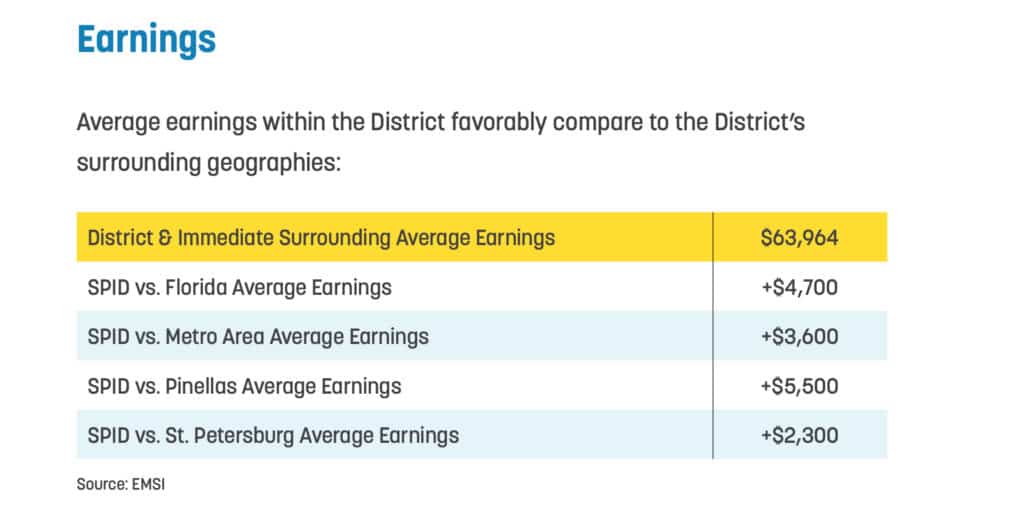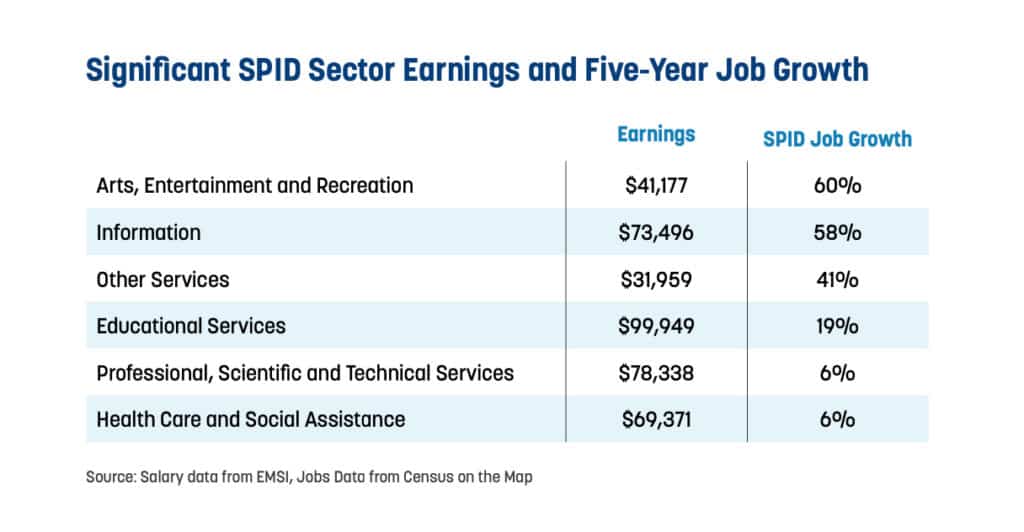St. Pete Innovation District proves to be a growth engine

One of St. Pete’s smallest districts is driving big growth.
The St. Pete Innovation District has brought new jobs and research dollars to the city, said Alison Barlow, executive director of SPID.
The district makes up just under 1 square mile south of downtown St. Petersburg and is home to some of the best-known institutions in the city, including University of South Florida’s St. Petersburg campus, Johns Hopkins All Children’s Hospital, Bayfront Health St. Petersburg, the Dali Museum and Poynter Institute, among others.
The district provides jobs to about 7,500 employees, according to a newly published report, the first of its kind since the Innovation District officially was established four years ago.
About 3 percent of the new jobs in St. Petersburg over the past five years are in the Innovation District, and there’s been an 18 percent in growth in jobs in the district paying median wage or better.

 Nearly two-thirds, or 65 percent, of the four-year degree district workers have a doctorate, according to the report. Sixty-five federal contracts and 166 federal grants were awarded to employees or institutions in the district in fiscal years 2019 and 2020, and 29 percent of the city’s federal grant dollars were awarded in the Innovation District.
Nearly two-thirds, or 65 percent, of the four-year degree district workers have a doctorate, according to the report. Sixty-five federal contracts and 166 federal grants were awarded to employees or institutions in the district in fiscal years 2019 and 2020, and 29 percent of the city’s federal grant dollars were awarded in the Innovation District.
“We always knew it was an intellectual hub for the city. The data proves that out with the job growth, the number of Ph.D.’s, the amount of research dollars,” Barlow said. “Sometimes we lose sight of how much that can be an engine to drive growth throughout the city.”
Property within the Innovation District is valued at $1.1 billion, according to Pinellas County property records, and over the past five years it’s become an increasingly attractive location for businesses.
 Average rents for commercial space also have gone up over five years, from $21.98 in 2015 to $25.71 in 2020.
Average rents for commercial space also have gone up over five years, from $21.98 in 2015 to $25.71 in 2020.
Residential home values have risen by 59 percent, outpacing the city, county and state by more than two times, and the country by more than three times, according to the report.
Collaborations
One key aspect of the district that can’t be easily put into numbers is the connections that have taken place between institutions and researchers. As one example, Barlow cited a five-year, $9 million cooperative agreement awarded to the USF College of Marine Science by the National Oceanic and Atmospheric Administration. The partnership will launch the Center for Ocean Mapping and Innovative Technologies at the USF St. Petersburg campus.

Alison Barlow, executive director, St. Pete Innovation District
The willingness and the energy to make those types of collaborations happen are a source of pride for Barlow, who has been executive director of SPID for three years.
“We knew anecdotally that it probably would work but it was a little bit of the unknown. We couldn’t point to metrics or measures that say if you bring the Innovation District together, magic will happen,” she said. “There’s been several examples of conversations that have happened with an interesting diverse group of people around the table that led us to something we had never thought of before.”
The Innovation Scholars project, a program to connect local business leaders with income first-year students at USF St. Petersburg, came out of a meeting that had been called to discuss a different idea. That original idea wasn’t working and someone at the meeting helped pivot to what became the scholars program.
Another collaboration between the USF College of Marine Science and Johns Hopkins All Children’s will look at the intersection of ocean and human health.
The Covid-19 pandemic has had mixed impact on the district.
“There have been some collaborations that have excelled with the pandemic. It created opportunities in our digital inclusion collaboration and some work we’re doing in STEM education. But for our Ocean and Human Health collaboration, for instance, the next logical step is to be in the room together, to have conversations and to be in each other’s lab spaces, so that slowed that conversation down a little more than I hoped for the next year,” Barlow said. “Everyone has done a good job of pivoting and figuring out which projects can move forward in a meaningful way this year, and others that we can hold on to for next year.”
2021 and beyond
In addition to the Ocean and Human Health project, another opportunity for 2021 is a deep dive into helping young people consider STEAM careers, or those in science, technology, engineering, arts and math.
“We know from research and practical experience that young people get really excited about science and robotics and technology. We also see that when they get to high school or post-high school, moving into a STEAM career can be challenging, particularly in some of our underrepresented communities. We are going to look at that,” Barlow said. “There are some amazing programs— science festivals, after-school programs, robotic camps — but how do we knit them together, and then add mentoring and internships that will really help our teens explore the topic and find something they love.”
The report also highlights three projects in the Innovation District gaining momentum in 2021 and beyond.
• The Tampa Bay Innovation Center is building a two-story, 45,000-square-foot facility at 4th Street South and 11th Avenue South, set to open in 2023.
• The Dali Museum has announced a $35 million expansion.
• A potential mixed-use project is being discussed for Salt Creek, on the southern edge of the Innovation District.
In addition, the planned redevelopment of Tropicana Field, just a few blocks from the Innovation District, is expected to include housing, office space, entertainment, retail, dining, hotel and convention space, as well as a tech and research campus.
The post St. Pete Innovation District proves to be a growth engine appeared first on St Pete Catalyst.
